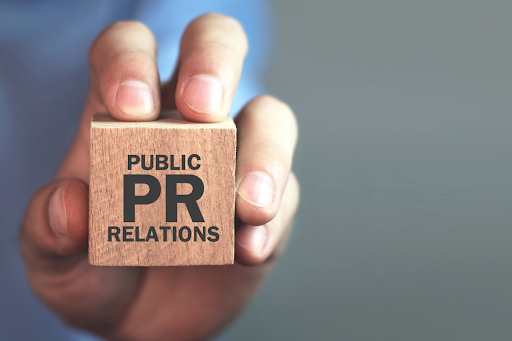With the rise of the internet and social media, public relations (PR) has segmented into two different approaches – digital and traditional. While traditional PR focuses on building relationships with journalists, media outlets, and influencers through face-to-face meetings, press releases, and events, digital PR focuses on building relationships online through social media, content marketing, and influencer outreach.
What is Digital PR?
Digital PR) is the practice of using online platforms and digital channels to build relationships with stakeholders, promote brands, and manage reputations. It is an integral part of a modern marketing strategy as it involves creating and distributing content that is relevant, valuable, and interesting to the target audience. The aim of digital PR is for f increasing brand awareness, driving traffic to a website, and ultimately, generating leads and sales.
What is Traditional PR?
Traditional PR refers to the practice of promoting and managing the reputation of a company, individual, or organisation through various forms of media, such as newspapers, magazines, television, and radio. It involves communicating with the public and stakeholders through press releases, media relations, and other forms of communication in order to shape public perception. This helps build and maintain a positive image. Traditional PR can also involve crisis management, which involves planning and responding to negative events or situations that could potentially damage an organisation’s reputation.

What’s the Difference?
One key difference between digital and traditional PR is the level of control a company has over the message. With digital PR, companies have more control over the content they publish and can directly engage with their audience. Traditional PR, on the other hand, relies on the media to disseminate the message, which means the company has less control over how the message is presented.
- Reach:
Traditional PR typically involves reaching out to traditional media outlets, such as newspapers, magazines, and TV stations. Digital PR, on the other hand, allows businesses to reach their target audience through a wider range of channels, including social media, blogs, and online news outlets.
- Speed:
Digital PR allows businesses to get their message out faster than traditional PR. With traditional PR, it can take days or even weeks for a message to reach the media and be published. With digital PR, a message can be shared instantly through social media and other online channels.
- Measurement:
Digital PR offers more opportunities for measurement than traditional PR. With traditional PR, it can be difficult to track the impact of a campaign. With digital PR, businesses can use tools such as Google Analytics to track website traffic, social media analytics to track engagement, and other metrics to measure the success of their campaigns.
- Cost:
Digital PR can be more cost-effective than traditional PR. With traditional PR, businesses often have to pay for media placements, which can be expensive. With digital PR, businesses can reach their target audience through social media and other online channels at a much lower cost.

Let’s Talk Pros & Cons of Digital & Traditional PR
One major advantage of digital PR is its ability to reach a wider audience. With traditional PR, your message is limited to the audience of the media outlets that choose to cover your story. With digital PR, you can reach anyone with an internet connection, giving you the potential to reach a global audience. This is particularly useful if you are targeting a younger audience, as they are more likely to be online and engage with content on social media.
Digital PR is an SEO’s best friend. Digital PR can involve the distribution of content to news media and niche-relevant authority sites in your industry. A journalist or publication can find something from this content that they’d like to include in their own article. More often than not, publications will create website backlinks if they use an interesting piece of data or statistic, or a quote (expert commentary) from the business owner on a topic they’re writing about. This is incredibly valuable for SEO campaigns, as backlinking is one of the core pillars of SEO.
Another advantage of digital PR is its ability to be more targeted and personalised. With traditional PR, you are often at the mercy of the media outlet and their editorial calendar and targeted audiences. With digital PR, you have the ability to target specific demographics, interests, and locations through social media advertising and influencer outreach. This allows you to tailor your message and reach the right people at the right time.
However, there are also some disadvantages to digital PR, in particular the noise and competition on social media. With so much content being shared online, it can be difficult to stand out and get noticed. Traditional PR can often be more effective at getting your message in front of a large audience, as it is often more prestigious to be featured in a well-known publication or on a major news network.
Another disadvantage of digital PR is that it can be more time-consuming and require more resources. While traditional PR often involves sending out a press release and waiting for media outlets to cover your story, digital PR requires a more proactive approach. This can include creating and promoting content, engaging with followers on social media, and building relationships with influencers. All of this takes time and resources that may not be available to smaller companies or startups.
Which PR Is Best for Your Business?
Understanding the differences between these two approaches can help you choose the most effective PR strategy for your organisation. It can be tough to decide which PR strategy to use, and the best choice depends on what a business hopes to achieve. If the goal is to increase awareness of the brand within the industry and reach potential customers, Traditional PR may be the way to go. On the other hand, if the goal is to gain widespread media attention, Digital PR could be a better fit. The type of PR that is most effective for your organisation will depend on your goals, target audience, and resources. Both Traditional and Digital PR have the same ultimate goal, which is why some companies use both approaches. It may be helpful to consult with PR professionals to determine the best strategy for your organisation.
Establishing a Connection with Digital PR
Here are some tips for running a successful digital PR campaign:
- Identify your target audience:
To effectively reach your target audience through digital PR, you need to first identify who they are and where they spend their time online. This will help you choose the right channels and create content that resonates with them.
- Create a content calendar:
A content calendar is a plan that outlines the content that will be published on your website and social media channels. Creating a content calendar will help you stay organised and ensure that you are consistently publishing relevant, valuable content.
- Build relationships with influencers:
Influencer marketing can be a powerful tool in digital PR, so it’s important to build relationships with influencers in your industry. This can involve reaching out to them on social media, commenting on their blog posts, and sharing their content.
- Monitor and track your results:
It’s important to monitor and track the results of your digital PR efforts to see what’s working and what’s not. This can involve using tools such as Google Analytics to track website traffic and social media analytics to track engagement.
- Stay up to date with industry trends:
The digital landscape is constantly changing, so it’s important to stay up to date with the latest trends and best practices in digital PR. This can involve reading industry blogs and attending conferences and events.

Ensure your PR is aligned with your business goals
Both digital PR and traditional PR have their own set of advantages and disadvantages, and the best approach for a company will depend on its goals and target audience. Digital PR is a great way to reach a wider and more targeted audience, but it can be more time-consuming and require more resources. Traditional PR can be more effective at getting your message in front of a large audience, but it can be less targeted and personalised. Ultimately, the best approach is to use a combination of both digital and traditional PR to reach the maximum number of people and effectively communicate your message. The principles of effective public relations still apply, such as the importance of building relationships and creating valuable, relevant content. By following the tips outlined above, businesses can run successful digital PR campaigns that drive results and support their overall marketing efforts.

Explore Our Digital PR Services in More Detail
Are you interested in learning more about how digital PR can help you manage your reputation and boost your online presence? As an SEO freelancer, I will help you develop a customised plan to assist you in achieving your digital PR objectives. We will have your brand earning valuable, high authority links in no time.

